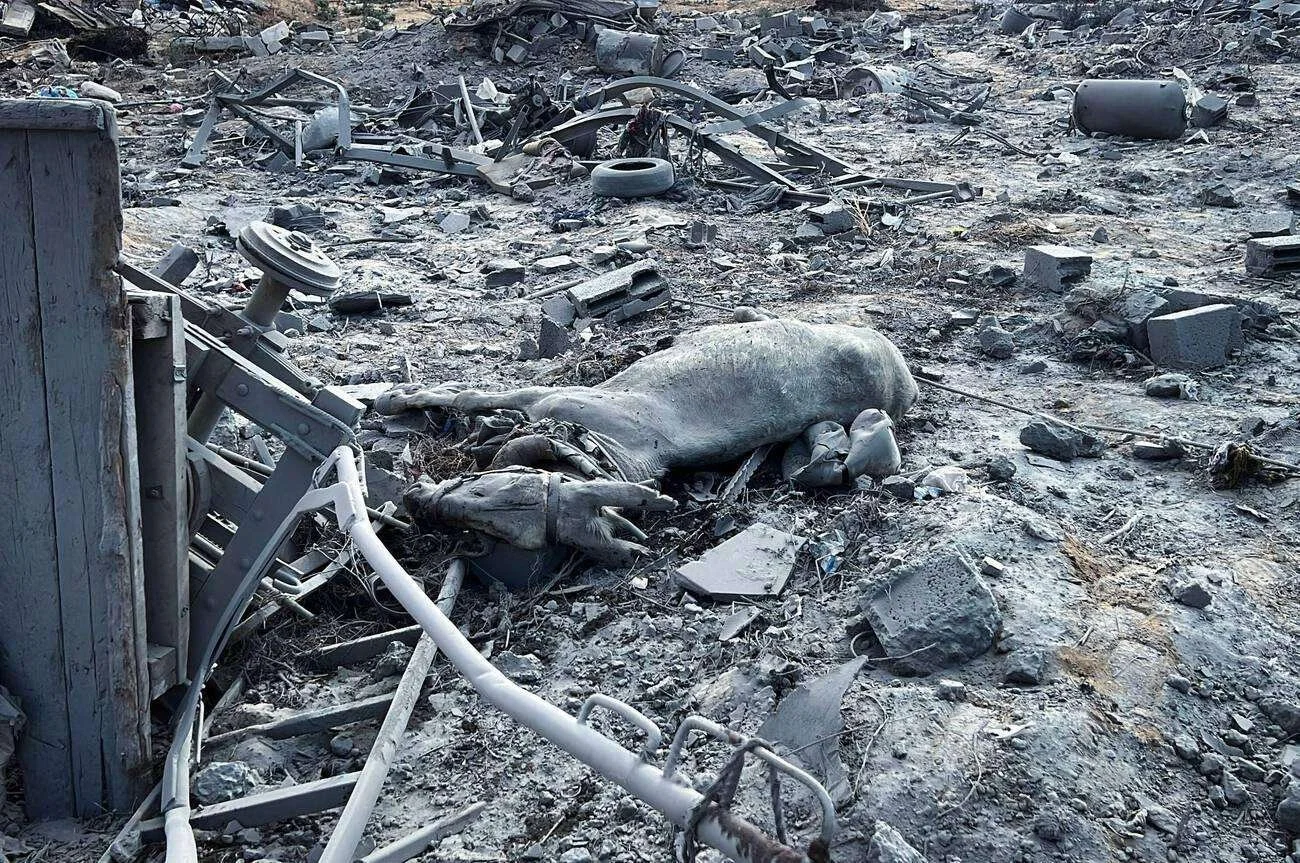How Israel Weaponizes Animals in Settler Colonialism
“Gaza parrot gets treatment from Israeli animal rights group,” read an AP news headline. Koko, an African grey parrot, was taken to a mobile veterinary unit at the Erez crossing in 2019. The mission, organized by Israeli animal rights activists and coordinated by COGAT (the Israeli ‘defense’ body overseeing Palestinian civilian affairs), was presented as an act of compassion. But the contrast was stark: since 2007, Palestinians have been routinely denied access to specialized medical care because of the blockade enforced by Israel and Egypt. Gaza’s health system, crippled by medicine shortages and closed borders, forces patients to seek treatment outside. Cancer patients die waiting for permits. Children endure pain as their applications are delayed or denied.
Why can a parrot cross the border for treatment while Palestinians cannot? Because it’s propaganda, not compassion.
Hasbara and image management
After the massacre at the Sabra and Shatila refugee camps in 1982 provoked international outrage, Israel realized it was losing global opinion and began investing heavily in propaganda, or hasbara. Israel polished its image as a modern democracy, a haven for women and LGBTQ people and later, as an animal-friendly ‘vegan nation.’
But when we look closer, another story emerges: in Palestine, animals are weaponized, made into tools of violence, victims of war, and instruments of propaganda.
Dogs as weapons
In February 2024, soldiers raided Balata refugee camp. They unleashed a dog into the home of the Hashash family. Three-year-old Ibrahim was asleep in his mother’s lap when the dog tore him from her arms, ripped away his clothes, and bit him repeatedly as blood pooled on the floor. The mauling lasted three minutes before soldiers intervened. He needed 42 stitches.
This was not an isolated attack. In Tulkarem, a 13-year-old boy was mauled. In Jenin, a 14-year-old girl. In Tubas, two siblings aged 8 and 12. In Gaza in July 2024, a young man with Down syndrome, Muhammed Bhar was killed by a military dog inside his home. Earlier this year in Khan Younis, soldiers set a dog on Tahrir Husni al-Arian, nine months pregnant after six years of waiting for a child. The dog’s attack lasted 10 minutes. Tahrir lost her baby.
Attacking civilians is a war crime under international law, and even more so when those civilians are children or people with disabilities. Yet these attacks continue.
Dogs aren’t only used in home raids. They’re used in Israeli prisons, ordered to terrorize and bite detainees, to urinate and even defecate on them. They became weapons of humiliation as much as of violence.
And where do these dogs come from? From Europe.
The Oketz canine unit, Israel’s specialist dog division, openly admits that 99 percent of its animals come from European breeders. The Netherlands, Germany and the UK, countries that sell themselves as guardians of human rights, export dogs to Israel under a loophole. Military dogs are not legally classified as “weapons” in EU law, so they can be sold without restriction. This means European governments are complicit in war crimes by supplying the very animals used to terrorize Palestinian civilians.
Oketz has been operating since the 1970s, training dogs to instill fear. Palestinians describe the terror of hearing a dog bark before soldiers even enter a home. Children begin crying before a single shot is fired, because they know what follows. It is psychological warfare.
There are historical parallels. In Birmingham, Alabama, police dogs were used to attack civil rights marchers. In apartheid South Africa, dogs were unleashed on Black protesters. Colonial powers have long used animals to dehumanize the colonized, marking them as prey.
In a settler-colonial system, animals become weapons and Palestinians targets, both reduced to instruments of domination.
Animals as casualties
And when animals aren’t turned into weapons, they often share the fate of Palestinians as casualties of violence and dispossession.
In Gaza, bombings bury animals under rubble, killing pets, livestock and wildlife alike. Farmers report cows and sheep starving or vanishing after shelling; over 90% of cattle have died. Bombing water tanks, feed stores and barns ensures that animals starve alongside humans.
Settler violence follows the same logic. In the South Hebron Hills, sheep have been poisoned. In the Jordan Valley, goats slaughtered. Beehives torched, robbing families of honey and income. They are strategies to collapse food security, drive families from their land, and clear the way for more settlements.
The destruction extends to entire ecosystems. Olive groves, vital nesting grounds for birds, are uprooted. Habitats bulldozed to expand illegal outposts. What appears as environmental destruction is, in fact, ecological warfare, designed to make Palestinian life unsustainable.
And then, the crocodiles. In the Jordan Valley, the Israeli army killed 262 Nile crocodiles kept on a farm near the settlement of Petzael, claiming they posed a “risk to settlers.” In reality, the animals were starving in an abandoned farm awaiting transfer abroad. When lives, human or animal, obstruct the settlement project, they are eliminated.
Animals too are casualties in Israel’s war against Palestinian survival.
Vegan-Washing Propaganda
And just as animals are made to suffer and die alongside Palestinians, they are also conscripted into Israel’s propaganda machine to launder its image abroad.
Headlines about Koko the parrot framed Israel as compassionate and Palestinians as savage. The parrot was cast as worth saving, while Palestinians were framed as guilty and therefore disposable.
Israel brands itself as the “vegan nation.” The “vegan-friendly army.” Soldiers who refuse to eat animal-based foods or wear leather boots, so as not to participate in animal cruelty while bombing Gaza and killing Palestinians. A country with sanctuaries and zoos, while keeping Palestinians in an open-air cage.
Western animal rights groups repeat the narrative. PETA, Mercy for Animals and ProVeg all praise Israel’s “vegan revolution.” None mention that Israel consumes more chicken per capita than any other country, or that it ranks among the top for beef. None mention that Israel imposed a calorie cap on Palestinians in Gaza, or that today, it blocks food aid, creating a man-made famine.
This “vegan revolution” began in 2011, when American activist Gary Yourofsky’s “Best Speech Ever” was translated into Hebrew and promoted across Israel. His call to “put animals first, politics nowhere” was a gift to Zionists: a depoliticized veganism that ignored apartheid and human oppression.
The state quickly joined in. The IDF bragged on social media about vegan soldiers. Tel Aviv was marketed as the “vegan capital of the world.” The Israeli government invested in vegan food tech start-ups, branding Israel as a hub of “sustainable innovation.”
Prominent figures helped sell the story. Tal Gilboa, a Big Brother reality TV star and ex-soldier, became Netanyahu’s “animal rights advisor”. Omri Paz turned Vegan Friendly into a political force, encouraging vegans to register in Israeli parties to influence policy. It also raised funds to send vegan food parcels to IDF soldiers during the Gaza genocide.
And sometimes the propaganda works by distraction. International press celebrated Netanyahu for changing a law so that dogs who bite would not be placed in solitary confinement. The world praised Israel’s compassion for dogs, even as Palestinian children were locked in solitary cells without trial.
This is vegan-washing: using the language of compassion for animals to whitewash a regime built on violence against people.
—
Israel weaponizes animals to instill fear, to leave them as victims, and to polish its image abroad. Each is part of the settler-colonial project, sustained by Western complicity. But compassion that extends to a parrot and not a Palestinian child is not compassion at all. Animal liberation cannot exist without Palestinian liberation.



